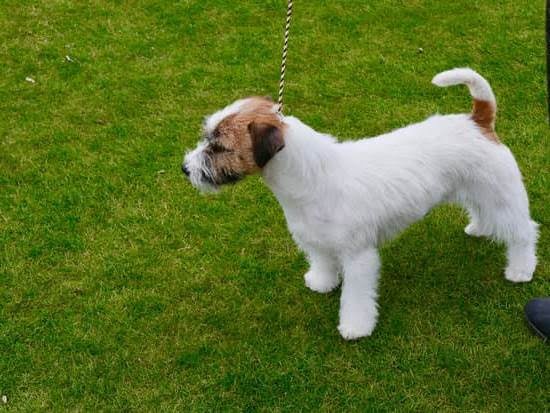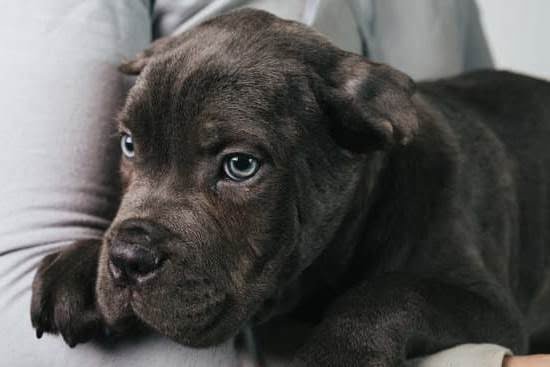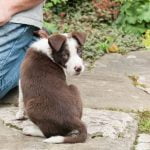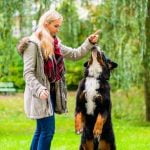Introduction
Dog licking is a common behavior in canines, usually used as an affection sign. Dogs may lick people to express their liking and love; some experts believe that it may be a remnant of their “puppy-licking” behavior imprinted during the puppy stage. Motivations for licking can also depend on individual dog temperaments and personalities. If a dog licks to get attention or gets rewarded with positive reinforcement such as treats, playtime or petting, they will associate those rewards with licking and continue the habit.
Sometimes, however, licking people can become excessive and even uncomfortable for the person being licked. Dogs may also resort to this behavior out of anxiety or stress as well. In order to stop your pup from getting too comfortable with excessive licking, there are several things you can do:
1.Try redirecting your pup’s attention by offering him an appropriate toy or treat whenever he starts displaying licking behavior around others.
2. Make sure never to reward your dog for showing signs of excessive licking with any treats or petting, instead reward him only when he stops doing the desired action (i.e., when he stops licking).
3. Try teaching your pup commands like “sit” or “look at me” if necessary and every time they start attempting to lick you while they are obeying command give them lots of praise and positive reinforcement in return (in other words reward them with verbal praise).
4. Give the dog an alternate activity when people come over that might occupy his mind instead of jumping up and trying to lick them repeatedly—throw them a ball or offer him another type of interactive toy that requires more concentration than simply wanting to lick them all over.
Prepping for Training
Before you get started it’s important to understand why a dog might be inclined to lick people. Most often dogs lick out of affection and enjoyment; they may also do it as an instinctual way to get attention. Other times, a dog might be licking because they can taste something sweet or salty on your skin, like perspiration. Learning the source of your dog’s behavior is important in training them not to lick people.
You also need to consider how you want to modify the behavior. Is it a complete no-licking rule, an occasional acceptable moment, or something else? Understand that while most dogs will eventually follow clear expectations, don’t become discouraged if it takes several training sessions. It’s crucial to have patience and consistency throughout the process – be sure everyone in your household is abiding by the same idea when interacting with the dog.
When training starts make sure every person involved sticks to the same rule; any mixed messages confuse the dog and slow down progress. To set up successful boundaries establish rules like “No licking above chin level” or “If you sit polite with all four paws on floor you may say hello with one lick below my chin” — whatever makes sense for your family unit and sets boundaries in a way that are easy for your pup to comprehend.
Make sure you reward good behaviors too – this not only reinforces good habits but also keeps them motivated during training sessions so they remain engaged — keep treats handy! Finally ensure that expectations remain consistent at all times — this includes all members of your family, friends and anyone else who interacts with them regularly. Most importantly be patient — remember that dogs learn at their own pace so stick to the specific rules while providing positive reinforcement as needed until desired results are reached.
Redirecting Attention
When training your dog not to lick people, it is important to remember that punishing them will likely be ineffective, and in some cases can even make the problem worse. Therefore, the key approach is to use positive reinforcement and redirecting attention. This means rewarding behavior you like, such as sitting or playing with a toy, instead of licking. To help distract your pup from licking people, here are some activities you can offer:
• Provide interactive toys like puzzle treat dispensers or food-stuffed toys. These games keep their minds stimulated and rewarded with treats for completing a task.
• Enroll your pup in an agility course or tricks class. Entertaining activities like these provide mental stimulation and physical exercise while also teaching them obedience commands and building trust between pet parents and four-legged friends.
• Take frequent walks – these get them away from potentially licky situations and provide fresh air for both you and your pup. Make sure to stick to the same route every day so they know what’s expected of them if a person appears on the sidewalk – no licking!
• Encourage playdates whenever possible! Going out or having another pup over sets up great interactions between dogs both on-leash and off-leash in a safe environment. Playing with other pups can satisfy their social needs instead of using humans as the main source for affectionate interaction.
Rewards and Reprimands
Training a dog not to lick people requires positive reinforcement and negative punishment. Positive reinforcement means that a reward such as a treat or toy is given when the dog demonstrates the desired behavior of not licking people. Negative punishment refers to withholding rewards or scolding when the dog licks people. This type of punishment leaves the dog feeling confused and may lead them to repeat bad habits.
It is important for owners to use both methods when training their dogs, as this helps create and reinforce clear boundaries with the animal. To start training, it helps to first establish a command so that you can verbally communicate when your furry friend should and should not be licking people. For instance, having the command “no lick” gets your message across more clearly than speaking in generalities like “stop it.”
Once this command has been established, offer rewards regularly when your pet refrains from licking any person they come in contact with. These rewards are key because they help strengthen the positive connection between good behavior and getting an object they love such as treats or toys. Continue offering these rewards even after you’re sure they’ve learned the behavior in order to maintain consistency.
If your pet continues tongue-kissing their visitors, then it’s time for reprimands. It’s important that all members of the household implement those; otherwise, it can send mixed signals and lead to confusion for the pup. If you catch them licking someone, firmly say “no lick!” before redirecting their attention to other activities such as playing fetch or getting some exercise outdoors. Doing this will help train them out of making unwanted physical contact with others in order to seek attention, affection or praise from friends, family and strangers alike.
Training for Success
Creating a positive training environment is essential for teaching your dog not to lick people. Dogs respond best when they know what is expected of them and when they are rewarded for performing desired behaviors. As you start your training, take into account things like the dog’s age, breed, temperament, and history. You should also establish consistent expectations and rules to ensure successful training.
When setting up the training environment, consider safety first so you can avoid unpleasantness and achieve positive results with your pup. If possible, perform the training in an area free from distractions. Have the necessary supplies on hand such as treats if you choose to use food rewards or a clicker if that’s how you plan to shape behavior. Spend time building solid relationships through bonding activities like play before beginning the actual licking control lesson. Establish clear communication between both of you by making commands easy to understand and consistent throughout all interactions.
Finally, mutual respect must be present between dog and handler at all times to ensure successful training sessions. Never punish or use physical force when attempting to stop licking behaviors; instead use patience, consistency and effective positive reinforcement techniques. Reinforcement should not only reward good behavior but also discourage unwanted behaviors such as licking people – for example giving praise when your pup does not lick people but redirecting attention away from licking when it does occur can help re-direct your pup’s focus onto more desirable activities rather than continuing with the undesired behavior of licking people.
Practicing Patience
One of the most important things to keep in mind as you train your dog not to lick people is that training takes time. Be patient and create a plan with realistic goals. Some goals might include only allowing your dog to greet people for a few seconds before redirecting them, or only touching them and giving them treats when they do not lick. These types of positive reinforcement will go far towards helping your dog learn the behavior you want.
Providing realistic expectations is key. If you’re expecting your pup to be trained overnight without any issues, don’t be surprised if it doesn’t go according to plan! Setting incremental benchmarks, such as providing a treat for two seconds of contact without licking, can significantly encourage progress over time. With consistent practice, it should become much easier for your pup over time- but be kind and take baby steps!
Finally, reward successes – no matter how small! Celebrate each moment (even if it’s brief!) of better behavior and continue on the path towards successful puppy etiquitte training!
Safety First
When it comes to training your dog not to lick people, safety should always be your first priority. Before you attempt any type of training, you will want to make sure both you and your dog understand each other and that they feel safe in the presence of people. Establish a basic understanding between the two of you by offering verbal cues in a comfortable atmosphere such as your own home. You can start by asking them to “sit” or “stay” when a guest arrives at your house.
Once you have established some basic understanding between yourself and your pup, it’s time to move on to more advanced training. If old habits die hard and your pup is still licking people despite verbal commands, you may want to try introducing physical cues such as gently pushing their muzzle down away from the person if they get too close. This may take patience, but eventually with enough practice, your pup will learn that licking is not an acceptable behavior around people.
In addition, treats are also a great tool for encouraging proper behavior in public settings like obedience classes or park playdates. When given negative reinforcement for approaching others too eagerly or with licks and jumps, hand out treats immediately afterwards when they calm down and obey behavioral expectations instead. With enough repetition over time, your pet will soon learn that good behavior leads to rewards (treats), while bad behavior only leads to unpleasant experiences (no treats!).
Resources
Training your dog not to lick people takes patience and consistency. Step one is to teach your dog a reliable “No lick” cue. When the dog exhibits signs of wanting to lick, say “No lick” firmly and at the same time direct him away from the person. Once he understands the cue, reward him with treats when he stops licking in response to it. It also helps to wear clothing or accessories that are bitter-tasting or sharp-smelling – this will help discourage licking by making it an unpleasant experience for the dog.
Consistency is key when implementing these methods, so it’s important that everyone in the home follows them as well. It’s helpful to establish boundaries early; if a person in the family doesn’t want to be licked they should say “No lick” every time. Enlisting the help of a certified professional dog trainer can be very beneficial during this process. They can teach you how to properly use positive reinforcement techniques as part of establishing good behaviors around licking people and answer any questions you may have about further training requirements for your specific breed or individual pup.
For further training resources, there are several excellent books and videos available on teaching dogs not to lick people. Some popular titles are The Dog Trainer’s Complete Guide to a Happy, Well-Behaved Pet by Dr Joanne Chouinard; Positively Dog Training: New Puppington Handbook by Victoria Stilwell; and My Smart Puppy: Fun, Effective Tips on Raising Your Puppy Right by Brian Kilcommons & Sarah Wilson. Videos such as Stop Puppy Licking from Cesar Millan and Clicker Training Basics from Zak George are also very helpful in introducing concepts related to training pup-parents through positive reinforcement techniques rather than punishment-based approaches.
Conclusion
When training a dog not to lick people, it is important to remember to use a holistic approach. Establishing yourself as the pack leader is essential as dogs tend to return control back to the leader. Redirect and reward when appropriate and focus on teaching desired behaviors rather than punishing undesired ones.
In addition, exercise and play are crucial for a healthy physical and mental state. Exercise your dog regularly so they can vent their excess energy in a positive direction. Additionally, provide mental stimulation with activities such as puzzle toys or training sessions. Regular interaction will build up your relationship with the dog and inspire loyalty. A tired pup is one less likely to misbehave (lick people, for example).
Finally, remain consistent with your training technique across all members of the household in order for the behavior modification process to work correctly. Demonstrate polite behaviors in front of your pup instead of constantly correcting them and reward those that you expect from your furry friend such as remaining visibly calm around visitors. It is more rewarding for both you and your pet if you can offer praise when appropriate rather than just disciplining when rules are broken!

Welcome to the blog! I am a professional dog trainer and have been working with dogs for many years. In this blog, I will be discussing various topics related to dog training, including tips, tricks, and advice. I hope you find this information helpful and informative. Thanks for reading!





